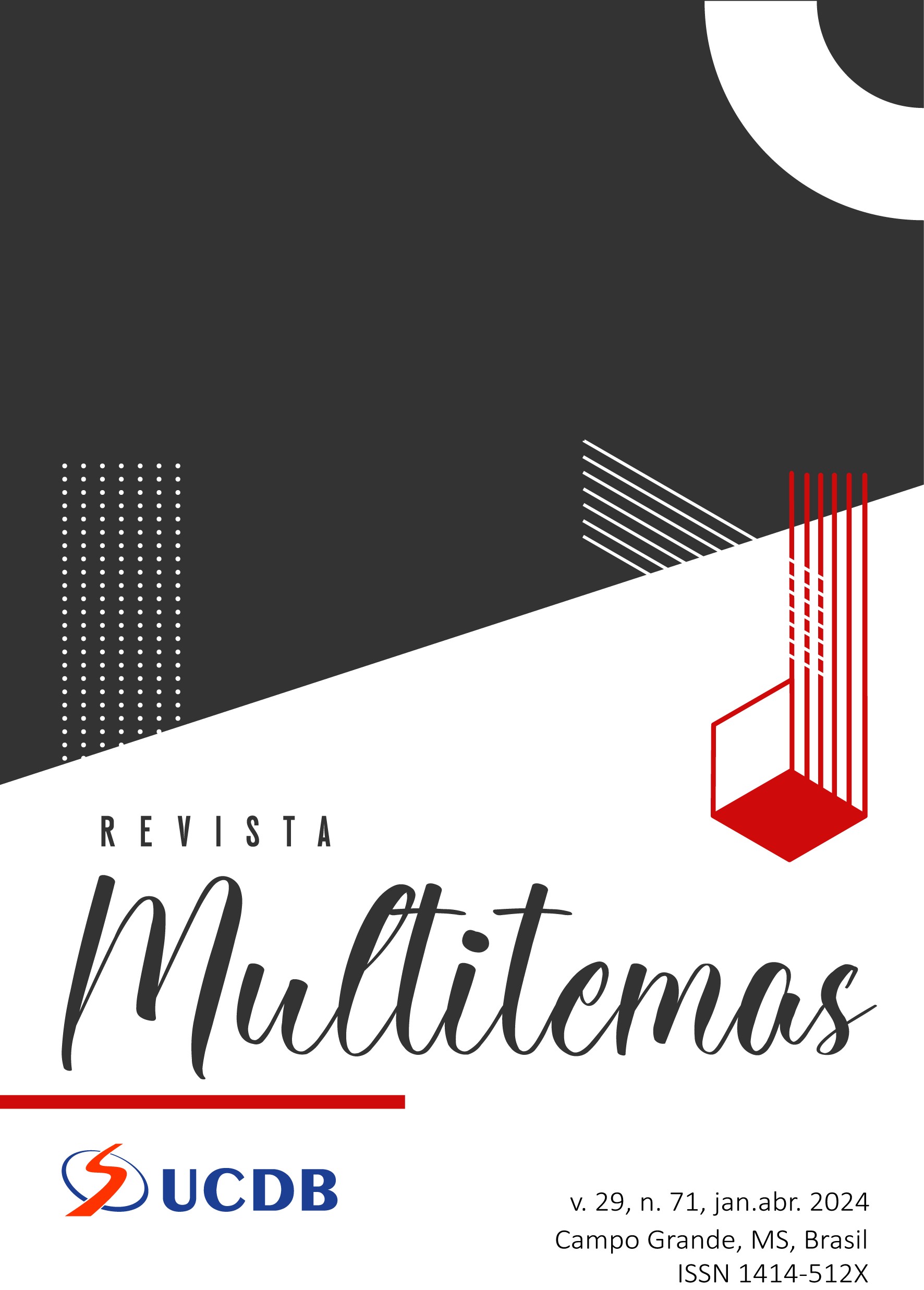Development of mobile application in dermatological and aesthetic dysfunction
DOI:
https://doi.org/10.20435/multi.v29i71.4280Keywords:
mobile learning, technology, innovation, application, aesthetic healthAbstract
The mostly Brazilian population present common disorders among young and adults peoples denominated aesthetic diseases, for example acne, melasma, psoriasis and nettle rash. Given this scenario, the development of a mobile application has become feasible, with technology growing exponentially, and, at the same time, there is also an increased interest for developing new ways of disseminating content in a practical way. In this study, the aim was to help nonprofessional, academics and health and aesthetic professionals. A large percentage were young people (74.7%), aged between 18 and 29 years old, but the target of the application is not exclusive to this profile. Our research resulted in good metrics, among them, the public studied is interested in paying to have the application on their smartphone. Thus, the virtual atlas of aesthetic dysfunctions demonstrated to be a tool for nonprofessional and professionals helping in the acquisition of information.
References
BAYOU, M. E.; KORVIN, A. Measuring the leanness of manufacturing systems—a case study of Ford Motor Company and General Motors. Journal of Engineering and Technology Management, [s.l.], v. 25, n. 4, p. 287–304, 2008.
BOUDREAUX, E. D.; WARING, M. E.; HAYES, R. B.; SADASIVAM, R. S.; MULLEN, S.; PAGOTO, S. Evaluating and selecting mobile health apps: strategies for healthcare providers and healthcare organizations. Translational behavioral medicine, [s.l.], v. 4, n. 4, p. 363-71, dez. 2014.
DITZZ, Á. J. M.; GOMES, G. R. R. A utilização do aplicativo plickers no apoio à avaliação formativa. Revista Tecnologias na Educação, [s.l.], ano 9, v. 19, p. 1-13, jul. 2017.
DYER, I. C. An examination of typographic standards and their relevance to contemporary user-centred web and application design. In: RAU, P. L. P. (Ed.). Cross-Cultural Design: 6th International Conference, CCD 2014 held as part of HCI International 2014. Heraklion: Springer International Publishing, 2014.
GARG, S.; BALIYAN, N. Comparative analysis of Android and iOS from security viewpoint. Computer Science Review, [s.l.], v. 40, n. 2, 2021.
GOUVEIA, E. L.; ROAZZI, A.; MOUTINHO, K.; DIAS, M. G. B. B. Raciocínio condicional: influências pragmáticas. Estudos de Psicologia, Natal, v. 7, p. 217-25, 2002.
KORRAPATI, N. H.; PERERA, M. H.; SWAMY, P. K.; RANGANATH, P. A.; ANKIREDDY, K.; THOMAS, S. A.; BATHALA, R. P. Skincare Routine During The COVID-19 Pandemic: An Online Survey. International Journal of Progressive Sciences and Technologies, [s.l.], v. 5, n. 2, 2021.
ŁOPACIUK, A.; ŁOBODA, M. Global beauty industry trends in the 21st century. In: MANAGEMENT, KNOWLEDGE AND LEARNING INTERNATIONAL CONFERENCE, 2013, Zadar. Anais [...]. Zadar: Make Learn, 2013.
MILNE-IVES, M.; LAM, C.; COCK, C.; VELTHOVEN, M. H. V.; MEINERT, E. Mobile apps for health behavior change in physical activity, diet, drug and alcohol use, and mental health: systematic review. JMIR mHealth and uHealth, [s.l.], v. 8, n. 3, mar. 2020.
PECORELLI, N. et al. An app for patient education and self-audit within an enhanced recovery program for bowel surgery: a pilot study assessing validity and usability. Surgical Endoscopy, [s.l.], v. 32, n. 5, p. 2263-273, 2018.
VENTOLA, C. L. Mobile devices and apps for health care professionals: uses and benefits. Pharmacy and Therapeutics P & T, [s.l.], v. 39, n. 5, p. 356-64, maio 2014.
XHAFERI, B.; XHAFERI, G. Online learning benefits and challenges during the COVID 19 - pandemic-students’ perspective from SEEU. SEEU Review, [s.l.], v. 15, n. 1, p. 86-103, 2020.
WILMER, H. H.; SHERMAN, L. E.; CHEIN, J. M. Smartphones and cognition: a review of research exploring the links between mobile technology habits and cognitive functioning. Frontiers in psychology, [s.l.], v. 8, p. 605, 2017.
Downloads
Published
How to Cite
Issue
Section
License
Copyright (c) 2023 Wellington Pinto, Pedro Henrique de Oliveira Cardoso, Ludovico Migliolo

This work is licensed under a Creative Commons Attribution 4.0 International License.
Os artigos publicados na Revista Multitemas têm acesso aberto (Open Access) sob a licença Creative Commons Attribution, que permite uso, distribuição e reprodução em qualquer meio, sem restrições desde que o trabalho original seja corretamente citado.
Direitos Autorais para artigos publicados nesta revista são do autor, com direitos de primeira publicação para a revista. Em virtude de aparecerem nesta revista de acesso público, os artigos são de uso gratuito, com atribuições próprias, em aplicações educacionais e não-comerciais.


